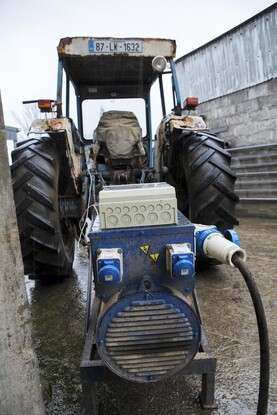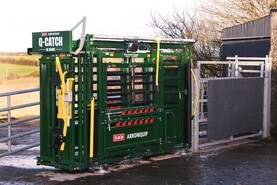Minister for Agriculture Simon Coveney launched the Dairy Equipment Scheme under TAMS II last June. This scheme offers a 40% grant aid on milking equipment and milk storage up to a maximum of €80,000. The investment can be more than €80,000, but the amount that can be claimed under the grant is capped at this amount.
The exception to the €80,000 cap is if the applicant is farming in a registered partnership. In this case, the investment ceiling is doubled as the partners can claim €80,000 each. Unlike previous schemes, no more than two partners can make a claim.
Eligible items
So, what is eligible for grant aid? There are three areas for investment under this scheme – milking equipment, milk storage and in-parlour feeders including bins and troughs.
Download the full list of eligible items
Milking equipment includes all the motors, pumps, pipe-work and vacuum lines. It also covers rotary parlours and robots and includes extensions to or replacements of existing machines but it excludes upgrades of an existing machine. For example, the addition of extra units would be eligible for the grant, but retro-fitting automatic cluster removers to an existing parlour would not be eligible.
Another thing that is not eligible for grant aid is the actual construction work surrounding a parlour. So building, concrete work, sheds and stall work are not eligible for grant aid. However, under the Young Farmer Capital Investment Scheme grant aid is available under the “dairy structure” heading. This includes all buildings, dairy, collecting yards, gates, etc, in addition to what is covered under the Dairy Equipment Scheme.
Big attraction
The other big attraction of this scheme over the Dairy Equipment Scheme is that the grant aid is higher at 60%. The overall investment ceiling is the same as the other scheme at €80,000, and this can be doubled in the case of a partnership with those qualifying getting the 60% funding. This scheme is only eligible to farmers under the age of 40 who have been farming for less than five years at the time of their application.
The requirement to be set up in farming within the last five years might catch some potential applicants. Getting a herd number in your own or joint name and/or joining a registered partnership is considered entering farming and, if this happened more than five years before date of application, then this disqualifies you from this scheme.
The way the schemes are managed is more or less the same. Funding is released in both schemes under tranches, with applications processed in three-month periods and funding allocated accordingly.
During each tranche, applicants will be marked and ranked for funding. Under the Dairy Equipment Scheme, age, previous funding under TAMS, costs of the project and size of the holding are all factors which affect ranking. If unsuccessful under one tranche, the applicant is automatically brought forward into the next tranche.
Planning permission, if required, must be included with an application. In the case of the Dairy Equipment Scheme, because there is no structural work being funded, planning permission, or a notice of planning permission exemption, is required for all external bulk tanks and milk silos. In the case of the young farmer scheme, full planning permission is required for nearly all external structures, whether roofed or not. This may slow down the application process and you may miss the deadline for the first tranche, which is 18 September 2015.
If planning to install a milking parlour into an existing shed, evidence of planning permission or a letter of exemption from planning is required from the relevant county council to be included with your application.
According to the Department of Agriculture, applications will be assessed after each tranche period and successful applicants will be informed in due course, but this could be a number of months after the tranche closes.
Read more from our special focus supplement on Dairy Equipment here.






 This is a subscriber-only article
This is a subscriber-only article










SHARING OPTIONS: